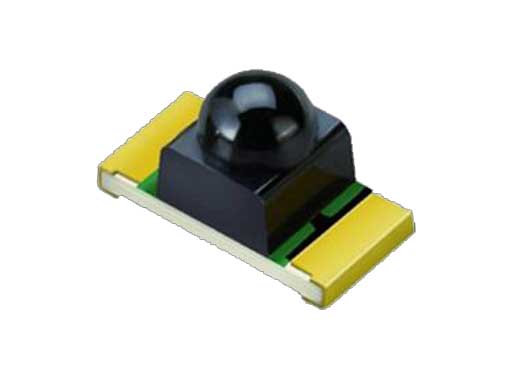Photodiode
China Photodiode ManufacturerA photosensitive diode, also known as a photodiode, is a photodetector that converts light into a current or voltage signal depending on how it is used. The die often uses a PN junction with photosensitive characteristics, which is very sensitive to changes in light, has
China Photodiode Manufacturer
A photosensitive diode, also known as a photodiode, is a photodetector that converts light into a current or voltage signal depending on how it is used. The die often uses a PN junction with photosensitive characteristics, which is very sensitive to changes in light, has unidirectional conductivity, and changes electrical characteristics when the light intensity is different. Therefore, the intensity of light can be used to change the current in the circuit.
What is a Photodiode?
Photosensitive diodes are also called photodiodes. Photodiodes are similar in structure to semiconductor diodes. Its die is a PN junction with photosensitive characteristics and has unidirectional conductivity, so a reverse voltage needs to be applied when working. When there is no light, there is a small saturated reverse leakage current, that is, dark current, and the photodiode is cut off at this time. When illuminated, the saturated reverse leakage current increases greatly, forming photocurrent, which changes with the intensity of incident light. When light irradiates the PN junction, electron-hole pairs can be generated in the PN junction, increasing the density of minority carriers. These carriers drift under the reverse voltage, increasing the reverse current. Therefore, the intensity of light can be used to change the current in the circuit. The common ones are 2CU, 2DU and other series.
 |  |  |
| SMD photoresistor Focus on the R&D, production and sales of SMD photoresistors, XYC-PT26B-L1, infrared emitting tubes, infrared emitting and receiving pair tubes, PIR, and infrared light boards. The factory's strong technical team can customize and develop for customers. The products are all made of selected high-quality raw materials and fully automated equipment. The company has 12 sets of high-end R&D equipment and over 20 invention and utility model patents. It is a national high-tech enterprise and has served more than 100 listed companies and 2,000 domestic and foreign customers. Colloid size (length*width*height): 3.5*2.8 Photocurrent (μA): 1.5-4.5 Dark current (μA): 0.8 Induction Spectrum (nm): 400-700 Acceptance Angle (°): 100 | F3 photoresistor for anti-light interference Colloid size (length*width*height): 3.0*3.85 Photocurrent (μA): 2-5.5 Dark current (μA): 0.4 Induction Spectrum (nm): 400-700 Acceptance Angle (°): 145 | 5mm flat head anti-infrared photoresistor Colloid size (length*width*height): 5.0*5.3 Photocurrent (μA): 2-5.5 Dark current (μA): 0.8 Induction Spectrum (nm): 400-700 Acceptance Angle (°): 145 |
How Photodiodes Work
Photodiodes are semiconductor devices that convert light signals into electrical signals. Its core part is also a PN junction, which is different in structure compared with ordinary diodes, in order to facilitate the acceptance of incident light. The PN junction area should be as large as possible, and the electrode area should be as small as possible, and the junction depth of the PN junction is very shallow, generally less than 1 micron.
Photodiodes work under the action of reverse voltage. When there is no light, the reverse current is very small (generally less than 0.1 microampere), which is called dark current. When there is light, the photons carrying energy enter the PN junction, and transfer the energy to the bound electrons on the covalent bond, so that some electrons break free from the covalent bond. Thereby generating electron---hole pairs, which are called photogenerated carriers.
They participate in the drift movement under the action of the reverse voltage, which makes the reverse current significantly larger, and the greater the intensity of the light, the greater the reverse current. This property is called "photoconductivity". When a photosensitive diode is irradiated by light of general illuminance, the current generated is called photocurrent. If a load is connected to the external circuit, an electrical signal is obtained on the load, and this electrical signal changes correspondingly with the change of light.
Photodiodes are photosensitive devices widely used in electronic circuits. The photodiode has a PN junction like the ordinary diode, the difference is that there is a transparent window on the outer casing of the photodiode to receive light irradiation and realize photoelectric conversion. The text symbol in the circuit diagram is generally VD.

